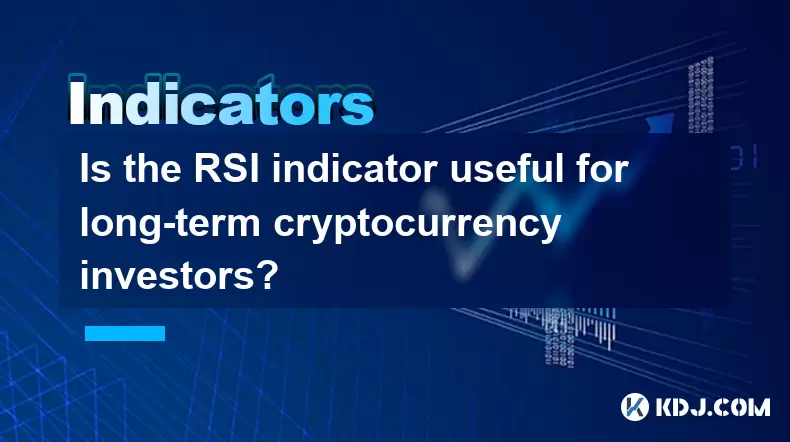-
 Bitcoin
Bitcoin $115100
-1.30% -
 Ethereum
Ethereum $4758
-1.70% -
 XRP
XRP $3.027
-2.19% -
 Tether USDt
Tether USDt $0.9998
-0.01% -
 BNB
BNB $883.2
-1.42% -
 Solana
Solana $204.0
2.62% -
 USDC
USDC $1.000
0.02% -
 Dogecoin
Dogecoin $0.2371
-0.97% -
 TRON
TRON $0.3612
-1.24% -
 Cardano
Cardano $0.9128
-2.19% -
 Chainlink
Chainlink $26.13
-3.93% -
 Hyperliquid
Hyperliquid $44.73
0.90% -
 Sui
Sui $3.715
-0.56% -
 Stellar
Stellar $0.4153
-2.41% -
 Ethena USDe
Ethena USDe $1.000
-0.04% -
 Bitcoin Cash
Bitcoin Cash $588.9
-2.06% -
 Avalanche
Avalanche $25.91
3.27% -
 Hedera
Hedera $0.2525
-1.45% -
 Litecoin
Litecoin $120.9
-1.35% -
 UNUS SED LEO
UNUS SED LEO $9.607
0.30% -
 Toncoin
Toncoin $3.382
-0.31% -
 Shiba Inu
Shiba Inu $0.00001329
-0.38% -
 Uniswap
Uniswap $11.38
-1.67% -
 Polkadot
Polkadot $4.222
2.83% -
 Aave
Aave $354.5
4.93% -
 Dai
Dai $0.0000
0.00% -
 Bitget Token
Bitget Token $4.704
-1.49% -
 Cronos
Cronos $0.1565
1.83% -
 Ethena
Ethena $0.7463
1.55% -
 Monero
Monero $265.8
-0.39%
Is the RSI indicator useful for long-term cryptocurrency investors?
The RSI can help long-term crypto investors identify momentum shifts, but it should be adjusted and combined with other tools to avoid false signals in volatile markets.
Aug 13, 2025 at 11:36 am

Understanding the RSI Indicator in Cryptocurrency Markets
The Relative Strength Index (RSI) is a momentum oscillator that measures the speed and change of price movements on a scale from 0 to 100. Originally developed by J. Welles Wilder, the RSI is widely used across financial markets, including cryptocurrency trading. For long-term cryptocurrency investors, understanding how the RSI functions is essential before determining its relevance. The indicator compares recent gains to recent losses to determine overbought or oversold conditions. Typically, an RSI value above 70 suggests that an asset may be overbought, while a value below 30 indicates it could be oversold.
While these thresholds are commonly used, long-term investors must recognize that in highly volatile markets like cryptocurrency, assets can remain in overbought or oversold territory for extended periods. This behavior can make traditional RSI signals misleading if interpreted in isolation. For example, Bitcoin has frequently maintained RSI levels above 70 during strong bull runs without an immediate reversal. Therefore, the utility of the RSI for long-term holders depends on how it is contextualized within broader market trends and additional analytical tools.
RSI and Long-Term Investment Strategy
Long-term cryptocurrency investors typically focus on fundamentals such as network adoption, technological development, and macroeconomic factors. However, technical indicators like the RSI can still play a supportive role. When used correctly, the RSI helps identify potential entry and exit zones during prolonged market cycles. For instance, during a multi-year bull market, an investor might use divergences between price and RSI to anticipate corrections or trend exhaustion.
- A bearish divergence occurs when the price makes a new high, but the RSI fails to surpass its previous high, suggesting weakening momentum.
- A bullish divergence happens when the price records a lower low, but the RSI forms a higher low, indicating potential upward reversal.
These divergence signals can be particularly valuable when observed on weekly or monthly charts, which align better with long-term investment horizons. By analyzing RSI on higher timeframes, investors reduce the noise associated with short-term volatility and increase the reliability of signals.
Adjusting RSI Parameters for Long-Term Analysis
The standard RSI setting uses a 14-period calculation, which may be too sensitive for long-term investors. Adjusting the period length can make the indicator more suitable for extended timeframes. Increasing the RSI period to 28 or 50 smooths the curve and reduces false signals. This adjustment helps filter out minor fluctuations and highlights significant shifts in momentum over months or years.
For example, applying a 50-week RSI on Bitcoin’s monthly chart can reveal long-term overbought or oversold conditions that align with major market cycles. When the 50-week RSI drops below 35, it may indicate a deep correction or capitulation phase, historically coinciding with long-term buying opportunities. Conversely, readings above 65 on this extended timeframe could suggest that the market is approaching a peak.
Using customized RSI settings requires consistent backtesting. Investors can compare historical RSI levels with past price movements to assess their predictive power. Platforms like TradingView allow users to modify RSI parameters and overlay them on long-term charts for detailed analysis.
Combining RSI with Other Indicators for Better Accuracy
Relying solely on the RSI can lead to misinterpretation, especially in trending cryptocurrency markets. To enhance decision-making, long-term investors should combine the RSI with complementary tools. One effective approach is pairing RSI with moving averages. For instance, using the 200-week moving average as a trend filter ensures that RSI signals are only acted upon when aligned with the overarching market direction.
- If the price is above the 200-week MA and the RSI rises from oversold levels, it may confirm a bullish trend continuation.
- If the price is below the 200-week MA and the RSI falls from overbought levels, it may support a bearish outlook.
Another powerful combination involves the on-chain metrics such as MVRV (Market Value to Realized Value) or NUPL (Net Unrealized Profit/Loss). These metrics provide fundamental context to RSI readings. A low RSI accompanied by historically low NUPL values may suggest extreme fear and a potential long-term bottom.
Practical Steps to Use RSI for Long-Term Cryptocurrency Investing
To integrate RSI into a long-term investment strategy, follow these detailed steps:
- Open a charting platform such as TradingView and select a cryptocurrency like Ethereum or Bitcoin.
- Switch to the weekly or monthly timeframe to align with long-term analysis.
- Add the RSI indicator and modify the period to 28 or 50 for smoother readings.
- Enable horizontal lines at 30 and 70, and consider adding additional levels at 35 and 65 for refined thresholds.
- Overlay the 200-week simple moving average to assess the primary trend.
- Monitor for divergences between price and RSI, especially after extended rallies or declines.
- Cross-verify RSI signals with on-chain data from platforms like Glassnode or CryptoQuant.
This structured approach ensures that RSI is not used in isolation but as part of a comprehensive analytical framework. Each signal should be evaluated in the context of broader market structure and investor sentiment.
Common Misconceptions About RSI Among Long-Term Investors
A widespread misconception is that an overbought RSI automatically means a price drop is imminent. In strong uptrends, especially in cryptocurrencies, overbought conditions can persist for months. Similarly, an oversold RSI does not guarantee an immediate rebound, particularly during bear markets. Long-term investors must avoid mechanical interpretations and instead focus on contextual signals such as trend alignment and volume patterns.
Another fallacy is assuming that RSI works equally well across all cryptocurrencies. Low-cap altcoins with low liquidity can produce erratic RSI readings due to large whale movements or pump-and-dump schemes. Therefore, RSI is more reliable when applied to large-cap, high-liquidity assets like Bitcoin and Ethereum.
FAQs
Can RSI predict major cryptocurrency market bottoms?
The RSI alone cannot predict exact market bottoms, but extended periods of RSI below 30 on weekly charts, especially when combined with positive divergences and favorable on-chain metrics, have historically coincided with long-term accumulation zones.
Should long-term investors use RSI on daily charts?
While daily charts provide more frequent signals, they introduce noise. Long-term investors benefit more from weekly or monthly RSI readings, which offer clearer insights into macro momentum and reduce false triggers.
Is a 14-period RSI sufficient for long-term analysis?
The default 14-period RSI is designed for short-to-medium term analysis. For long-term investing, extending the period to 28 or 50 improves signal reliability by filtering out short-term volatility.
How does RSI behave during cryptocurrency bull runs?
During strong bull markets, RSI often remains in overbought territory (above 70) for prolonged periods. This reflects sustained buying pressure and does not necessarily indicate an imminent reversal. Investors should look for bearish divergences or trend breaks rather than RSI levels alone.
Disclaimer:info@kdj.com
The information provided is not trading advice. kdj.com does not assume any responsibility for any investments made based on the information provided in this article. Cryptocurrencies are highly volatile and it is highly recommended that you invest with caution after thorough research!
If you believe that the content used on this website infringes your copyright, please contact us immediately (info@kdj.com) and we will delete it promptly.
- XYZVerse, Shiba Inu, and the 2025 Bull Cycle: A Meme Coin Evolution
- 2025-08-24 13:05:12
- WLFI Token, BingX, and the Trading Landscape: A New York Perspective
- 2025-08-24 12:45:20
- Aave, Governance, Allocation: Navigating DeFi's Shifting Sands
- 2025-08-24 12:45:20
- Crypto Coins in 2025: Meme Coins, Undervalued Blockchains, and Bull Run Predictions
- 2025-08-24 13:05:12
- Fed Pivot Ignites Crypto Rally: Altcoins Set to Outperform?
- 2025-08-24 13:25:12
- Eric Trump, Tokyo, and Metaplanet: A Bitcoin Bonanza?
- 2025-08-24 11:05:13
Related knowledge

What does it mean when the +DI and -DI cross frequently in the DMI indicator but the ADX is flattening?
Aug 11,2025 at 03:15am
Understanding the DMI Indicator ComponentsThe Directional Movement Index (DMI) is a technical analysis tool composed of three lines: the +DI (Positive...

What does the sudden appearance of a "dark cloud cover" candlestick pattern during an uptrend indicate?
Aug 13,2025 at 11:35am
Understanding the 'Dark Cloud Cover' Candlestick PatternThe dark cloud cover is a bearish reversal pattern in technical analysis that typically appear...

What does it mean when the moving average, MACD, and RSI all send buy signals simultaneously?
Aug 11,2025 at 01:42pm
Understanding the Convergence of Technical IndicatorsWhen the moving average, MACD, and RSI all generate buy signals at the same time, traders interpr...

What does it mean when both the KDJ indicator and the RSI show overbought signals simultaneously?
Aug 13,2025 at 11:35am
Understanding the KDJ Indicator in Cryptocurrency TradingThe KDJ indicator is a momentum oscillator derived from the Stochastic Oscillator, widely use...

What does it mean when the price is trading above the SAR indicator but the red dots are densely packed?
Aug 09,2025 at 11:49pm
Understanding the SAR Indicator and Its Visual SignalsThe SAR (Parabolic Stop and Reverse) indicator is a technical analysis tool used primarily to de...

What does it mean when the candlestick chart forms a "Morning Star" but trading volume is sluggish?
Aug 12,2025 at 06:28pm
Understanding the Morning Star Candlestick PatternThe Morning Star is a three-candle bullish reversal pattern commonly observed in cryptocurrency pric...

What does it mean when the +DI and -DI cross frequently in the DMI indicator but the ADX is flattening?
Aug 11,2025 at 03:15am
Understanding the DMI Indicator ComponentsThe Directional Movement Index (DMI) is a technical analysis tool composed of three lines: the +DI (Positive...

What does the sudden appearance of a "dark cloud cover" candlestick pattern during an uptrend indicate?
Aug 13,2025 at 11:35am
Understanding the 'Dark Cloud Cover' Candlestick PatternThe dark cloud cover is a bearish reversal pattern in technical analysis that typically appear...

What does it mean when the moving average, MACD, and RSI all send buy signals simultaneously?
Aug 11,2025 at 01:42pm
Understanding the Convergence of Technical IndicatorsWhen the moving average, MACD, and RSI all generate buy signals at the same time, traders interpr...

What does it mean when both the KDJ indicator and the RSI show overbought signals simultaneously?
Aug 13,2025 at 11:35am
Understanding the KDJ Indicator in Cryptocurrency TradingThe KDJ indicator is a momentum oscillator derived from the Stochastic Oscillator, widely use...

What does it mean when the price is trading above the SAR indicator but the red dots are densely packed?
Aug 09,2025 at 11:49pm
Understanding the SAR Indicator and Its Visual SignalsThe SAR (Parabolic Stop and Reverse) indicator is a technical analysis tool used primarily to de...

What does it mean when the candlestick chart forms a "Morning Star" but trading volume is sluggish?
Aug 12,2025 at 06:28pm
Understanding the Morning Star Candlestick PatternThe Morning Star is a three-candle bullish reversal pattern commonly observed in cryptocurrency pric...
See all articles

























































































